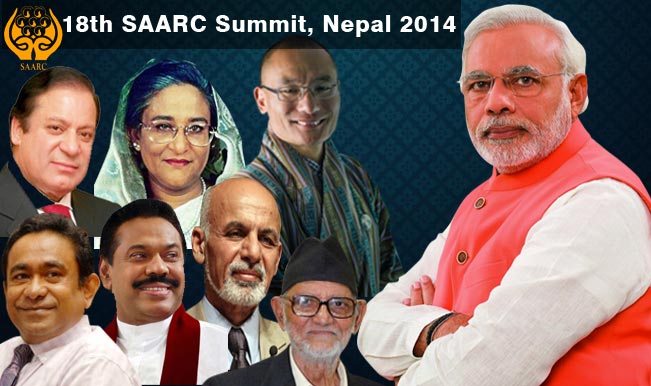Gone are the days when it was sufficient to increase the salary to get the best performance out of the employees. Employees are the heart and soul of an organization. Well-being affects performance, at work and in all areas of life.
Well-being is of two types:
1. Physical Well-being – It relates to ensuring the physical fitness of employees, protecting them from work related health hazards and promoting healthy lifestyle choices and behavioral change.
2. Emotional Well-being– It relates to managing the stress level in employees and the work related pressures.
For long, job satisfaction is considered as the parameter for emotional well being of the employees. Based on the idea that “happy workers are productive workers”, job performance is a widely studied area of job satisfaction.
Hackman and Oldham (1976) describe job satisfaction in the form of the “Job Characteristics” model, which has five main facets directly impacting job satisfaction:

Hezberg’s two-factor theory (1976) also suggests that organizations should focus on making the workplace more motivating, challenging and rewarding. It identifies two types of factors in an organization:
Hygiene Factors- Example. Work Environment, Relation with peers, seniors and subordinates, Company Policy, etc.
Motivating Factors- Example. Promotion, Work recognition, Monetary Rewards, Growth
Hence, the take-home message for HR managers or line managers who oversee work groups is that they must try to minimize the occurrence of events where the employee has to suppress emotions, and instead, attempt to informally institute rules that call for pleasant emotions (e.g. personalize recognition and employee successes). For instance, if employees are encouraged to display pleasant emotional signals and engage in open, friendly interaction, this helps to strengthen social bonds that result in higher employee satisfaction with the job.
But, is job satisfaction enough of an indicator to measure the well being of employees and organization as a whole? Nowadays the companies are moving beyond just job satisfaction to job engagement. Engaged employees are more than just satisfied with their jobs; they feel more psychologically committed to the work they do. Then there is the concept of “Psychological Contract” also. Rousseau (1989) defined it as “the employee’s perception of the reciprocal obligations existing with their employer; as such the employee has beliefs regarding the organization’s obligations to them as well as their own obligations to the organization”. Rousseau and Parks (1993) believe that a psychological contract is made up of three concepts. First, an employee perceives the promise of an obligation by his or her organization. The second concept of the psychological contract has to do with acceptance, which says that, when the psychological contract is developed, both parties are responsible for holding up their own part of the contract. The third concept is the organization’s fulfillment of that promise. To keep the employee engaged it is imperative for the organization to understand the psychological contract as it dictates an employee’s behavior and attitudes towards the position.
When there is the violation of contract by the employer following behavior is observed among the employees:
-Decreased level of trust;
-Dissatisfaction with the job/organization;
-High attrition
-Retaliatory or counter-productive behaviors (deviance).
-An organization should focus on establishing a “relational contract” with its employees based on the feelings of trust, citizenship, engagement, altruism and psychological commitment, rather than the traditional “give-take” transactional exchanges. This increases the importance of managing the well being of the employees and moving beyond the traditional forms of motivation.
Well-being is at three levels

Organization: Indicators of well being at organizational level are high revenues, cost effective production, etc.
Team: Indicators of well being at team level are good team dynamics, high team performance.
Individual: Indicators of well being at individual level are high performance, retention, high motivation.
Well-being Surveys
Emotional well-being can be measured by well-being surveys among the employees. The questionnaire should be prepared based on the established theories and models. If the organization is buying the survey then proper customization according to the objectives of the organization should be done. They should not be just attitude surveys, climate questionnaires or stress audits but an amalgamation of all. The results and recommendations from the survey should be practical and implementable and it should be high on “What’s in it For Me” for the employees. From the organizational perspective, the surveying and reporting should be quick, easy and cost-effective to administer even for small groups, teams or organization.
Ways to Achieve Well being
Apart from the usual employee engagement activities, organizations can run many well being enhancing activities also. Listed below are some of them:
-Sports & Outdoor Adventures
-Hobbies & Crafts Workshops
-Volunteering & Social Work
-Personal Development Workshops
Way Forward
In summary, an organization should have a structured program in place to help its employees and the organization as a whole to explore and enhance their wellbeing both individually and collectively.
[The article has been written by Kumari Meera. She is an MBA in HR from NMIMS, Mumbai ]
You might like reading:

The challenging Political scenarios in South Asia
In the recent concluded SAARC Summit (Nov. 2014) Indian Prime Minister Narendra Modi requested to all the participating nations to work towards ‘Change Cynicism to Optimism’. There is change in political environment of almost every South Asian countries. Concluded 18th Summit of SAARC (South Asian Association for Religion Cooperation) at Nepal, Kathmandu on Nov, 26-27, 2014 suggests the change in the political scenario of South Asia. […]
“Rockstar” Imtiaz Ali enthralls XIMB students
Maverick film director, Imtiaz Ali visited Xavier Institute of Management, Bhubaneswar, on 10th October 2015, to have an interactive session with the students of the B-School. The session was organized by IlluminatiX, the media and PR cell of XIMB as the first of its Celeb talks for the year. Mr. Ali, who has delivered super-hit gems like “Jab We Met”, […]































